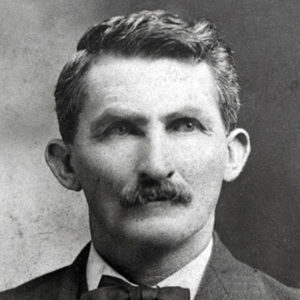calsfoundation@cals.org
Skirmishes at Clarksville
| Location: | Johnson County |
| Campaign: | Fort Smith Expedition (September 25–October 13, 1864) |
| Date: | September 28, 1864, and October 9, 1864 |
| Principal Commanders: | Major Thomas Derry, Captain John Herring (US); Colonel John Hill, Colonel Erasmus Stirman, and Colonel William H. Brooks (CS) |
| Forces Engaged: | Third Wisconsin Cavalry, Third Arkansas Cavalry, First Iowa Cavalry, Third Missouri Cavalry, Third U.S. Cavalry, Fourth Arkansas Cavalry (US); Second Arkansas Volunteers (CS) |
| Estimated Casualties: | 2 killed (US); at least 20 killed (CS) |
| Result: | Union victory |
Clarksville (Johnson County), located on the north side of the Arkansas River, was a prosperous town on the military road that ran from Little Rock (Pulaski County) to Fort Gibson in Indian Territory (present-day Oklahoma), as well as a major stage coach route. In addition, Spadra Bluffs, just three miles south of Clarksville, was a major river port. It was critical to keep the river and the military road open so the supplies and troops could be moved easily. Keeping control of both the river and the military road was of prime importance to both the Union and Confederate armies.
On September 25, 1864, Major Thomas Derry of the Third Wisconsin Cavalry led a Federal expedition of 385 men starting from Little Rock with the goal of reaching Fort Smith (Sebastian County). General John M. Thayer, the commanding officer at Fort Smith, was pleased when he learned that a large enough force had been assembled to break through the Confederate lines. Thayer reported that the “enemy was on every side and had cut off his forage and mail parties.” Every group Thayer had sent toward Little Rock had either been captured or driven back.
Derry knew that Confederate colonels John Hill, Erasmus Stirman, and William H. Brooks had troops stationed at various points along the route and used Clarksville as their headquarters. Derry had to use a long circuit in an effort to evade the Confederates but finally crossed the Arkansas River on September 28 in the vicinity of Spadra Bluffs. The ferries at Spadra (Johnson County), which had been running since the early 1800s, had been destroyed. Along the route, Captain John Herring with the Third Arkansas Cavalry (US) joined in and distracted the Confederates as Derry’s men proceeded north. Captain Herring’s men reached Clarksville at about 3:00 p.m. on September 28 and engaged the Confederate pickets, who offered little resistance before they fell back upon the main force in town. The Confederates took refuge behind fences and houses. Advance word of a Union force heading for Clarksville had worked its way up the river, but Derry’s forces arrived a day sooner than expected, so the resistance was not as great as it might have been.
When the main column of troops arrived in town, the Confederates scattered in all directions, leaving seven people dead on the streets of Clarksville. Derry did not report any casualties from the Clarksville skirmish. As the Union troops continued westward, camping that night at White Oak Creek, they had barely halted when the Confederate troops attacked them on all sides. Derry sent troops out to hold them off until dark. The Confederates tried to continue attacking that night under the cover of a severe storm. One man from the Third Wisconsin was killed during that encounter. The Union troops were constantly harassed for the rest of the journey, with one Union soldier dead.
The expedition reached Van Buren (Crawford County) on the evening of September 30. They crossed the Arkansas River on October 1. On the return trip, they stayed at Van Buren for eight days so that they could shoe 150 horses. They left Van Buren on October 8, with Herring leading the advance. The Union forces camped that night eight miles west of Clarksville. On October 9, Derry’s main force reached Clarksville, where they encountered a small Confederate force “who fired a good many shots without inflicting damage.” Herring pursued the Confederates across the bridge of Spadra Creek.
On October 10, the expedition marched thirty-five miles to the Illinois Bayou, but it experienced continual skirmishing on the way. Derry’s force reached Little Rock on October 13, having marched 180 miles on the round trip. Derry reported that they had killed twenty of the enemy and taken four prisoners. Two of Derry’s men were killed and two were missing.
For additional information:
Dane, Nancy. Tattered Glory: A Documentary Civil War History of the Arkansas River Valley. N.p.: 2005.
Hodges, Mary Frances. John Newton Sarber and Sarber County, Arkansas. Bloomington, IN: AuthorHouse, 2009.
“Third Wisconsin Cavalry.” Wisconsin Genealogy Trails. https://genealogytrails.com/wis/military/cw/3rdWICavReg.html (accessed February 1, 2022).
The War of the Rebellion: A Compilation of the Official Records of the Union and Confederate Armies. Series 1, Vol. 41. Washington DC: Government Printing Office, 1893.
Mary Frances Hodges
Little Rock, Arkansas
 Civil War Timeline
Civil War Timeline Military
Military ACWSC Logo
ACWSC Logo  Erasmus Stirman
Erasmus Stirman 




Comments
No comments on this entry yet.